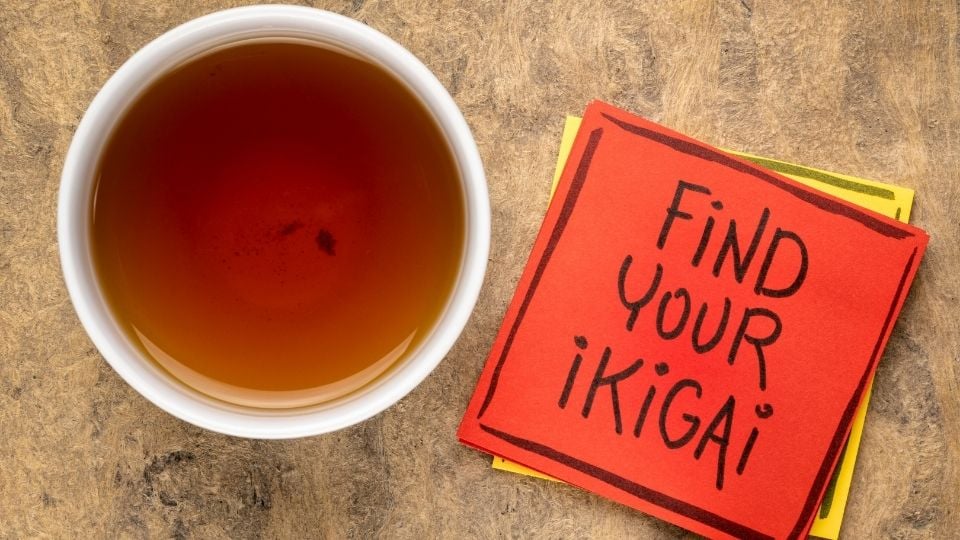
If you just Googled ‘Ikigai’ and have been greatly intrigued by this term.
You and I have a lot in common.
…and it will be fun to explore the ins-and-outs of this concept together.
Ideally, Ikigai is a Japanese concept that seems too good to be true. But only until you don’t dive in. It has recently been the subject of a new book by the authors’ Hector Garcia and Francesc Miralles who introduce the concept of ikigai as the ‘Japanese Secret to a Long and Happy Life’.
Ironically, Japan is one of the places with the highest life expectancy in the world.
According to data from Japan’s Ministry of Health, Labor, and Welfare, there are 400+ people who are past the age of 100 on the island of Okinawa, Japan. In fact, the average age of women in Japan is 96 and for men, it’s 84 which is greater than any other country in the world.
So, what role does ikigai have to play in it?
Let’s find out!
Ikigai Meaning
SUMMARY
The word ikigai is a Japanese concept that means “a reason for being”, aiming to achieve the balance between spiritual and practical aspects of life.
On the core, there’s no direct English translation for Ikigai but in Japanese, it translates to “reason for being”. More lyrically, it is also referred to as ‘the happiness of always being busy’.
While the origin dates back to the Heian Period extending from 794 to 1185, the person who coined the term was Akihiro Hasegawa, a clinical psychologist and expert of the ikigai evolution.
In 2001, he released a research paper where he said the word ‘gai’ literally originated from ‘kai’ in Japanese, literally translates to shells which were very valuable back then.
In Japanese, ikigai is written as 生き甲斐, which when broken will be two words
1. iki (生き) which means “life; alive”, and
2. kai which means “effect; result; or impact”.
As discussed, kai can also be sequentially voiced as gai which when combined with iki will arrive at: a reason for living; something that makes life worth living; life purpose or raison d être.
NOTE
Just so if you were wondering, how is ikigai pronounced – repeat after me “eye-ka-guy”
Now that we have been introduced to the word ikigai, let’s dive deep and understand the concept and what it means to signify.
Ikigai Diagram – What does it really mean?
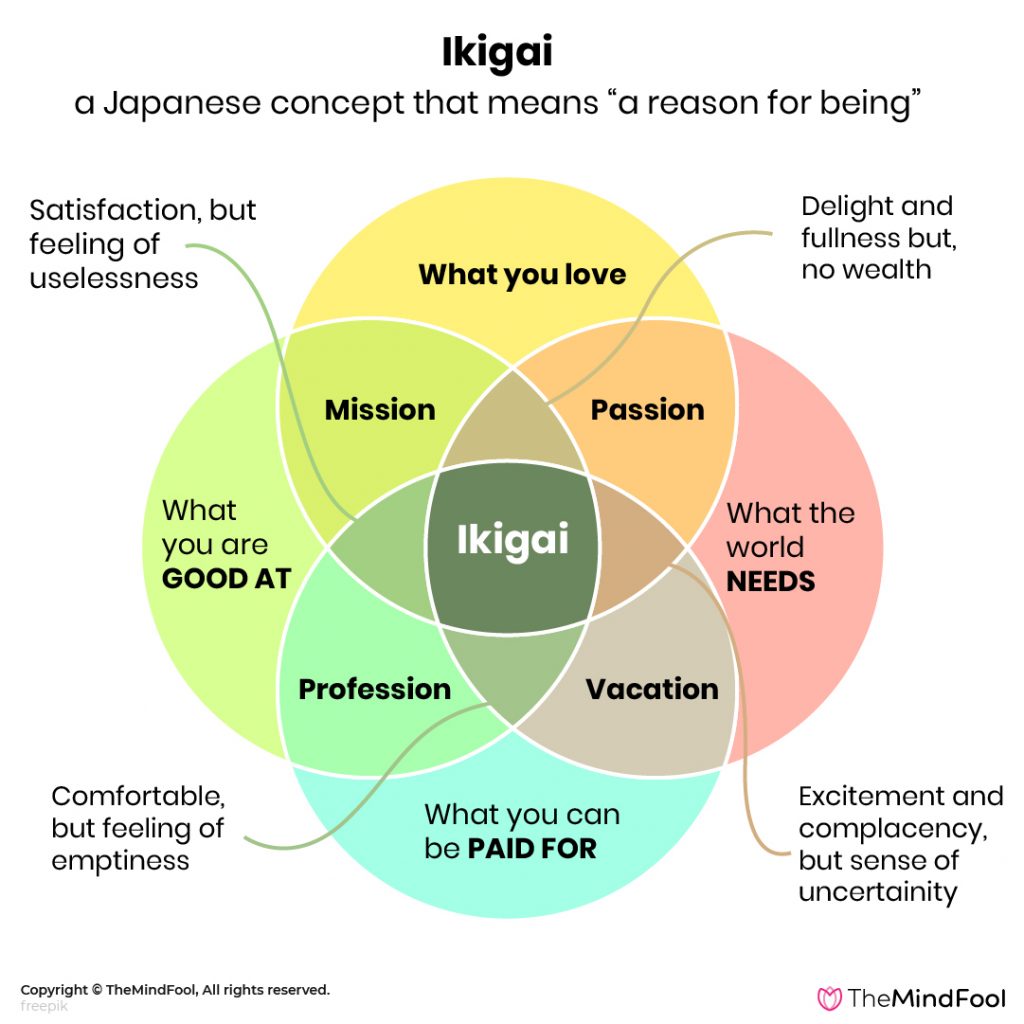
The best way to explain Ikigai as a concept is via a Venn diagram which is broadly divided into four sections or four elements:
- what you love, or your passion
2. what the world needs, or your mission
3. what the world needs, or your vocation
4. what you can get paid for, or your profession.
It’s at the intersection of these four sections where ikigai is achieved.
All that is great, but…
Ikigai Importance – Does it really make a difference?
Scientists and sociologists from all over the globe have closely analyzed this concept and have coined interesting conclusions.
While one theory suggests that ikigai can make you live longer, the other suggests that it gives you a satisfaction of life.
In 2017, there was a research conducted in a small town of Tokyo that boasts a population that has three times more residents with the age of 100+. The results revealed that the people had high figures of DHEA which was also believed to be the “miracle longevity hormone”.
But that’s not it.
There was one more thing that was common in all the participants: a hobby that they practiced daily. While one woman went fishing daily, another carved traditional wooden masks. This program concluded that if you are passionate and focused on one thing in life, it is sure to give you satisfaction, finally leading to a healthier and happier life.
Where is Ikigai practiced?
There’s an island in the southern direction of Mainland Japan called Okinawa which boasts the highest ratio of residents aging a century. It is also believed to be the birth-place of the ikigai concept.
There are also other factors that contribute to the long lives of the people living here, including, healthy diet, mild weather, low levels of stress.
But the primary factor that also connects it to the rest of long-living communities is the non-retiring, purpose-driven population.
By now you must have understood the basics of ikigai concept but of its application is still unclear, here are some
Ikigai Examples
Ikigai is unique to every individual and is the reason why people wake up every morning. As discussed, people in Okinawa island have been following this concept for a very long time which has also been the secret of their longer and healthier lives.
Let’s discuss a few examples for better understanding.
For a teacher,
Ikigai can be to see their students succeed.
For a banker,
Ikigai can be to balance returns and risks profitably.
For a Fisherman,
Ikigai can be to catch big fishes.
For a mother,
Ikigai can be to see her children happy.
For a craftsman,
Ikigai can be to create different forms of art every day.
But that’s not it. It can also be reversed. For instance, a banker might like to go fishing every day and a fisherman’s side passion might be to invest in profitable securities.
Even great and successful leaders like Bill Gates, Albert Einstein, or even Steve Jobs have honored and followed the concept of Ikigai in their own ways.
For instance, Albert Einstein told us to pursue our curiosities as he said,
“Don’t think about why you question, simply don’t stop questioning. Don’t worry about what you can’t answer, and don’t try to explain what you can’t know. Curiosity is its own reason. Aren’t you in awe when you contemplate the mysteries of eternity, of life, of the marvelous structure behind reality? And this is the miracle of the human mind — to use its constructions, concepts, and formulas as tools to explain what man sees, feels, and touches. Try to comprehend a little more each day. Have holy curiosity.”
Or, Howard W Thurman, a philosopher and civil rights leader said,
“Ask what makes you come alive and go do it.” … “Don’t ask what the world needs. Ask what makes you come alive, and go do it. Because what the world needs is people who have come alive.”
Now you understand how ikigai does not depend on professional activities. Some brands like Nescafe have also capitalized on this concept and explained it in one of its promotional videos –
After being so closely associated with this concept, I am sure you can’t wait to know what’s your ikigai is.
How to Find your Ikigai?
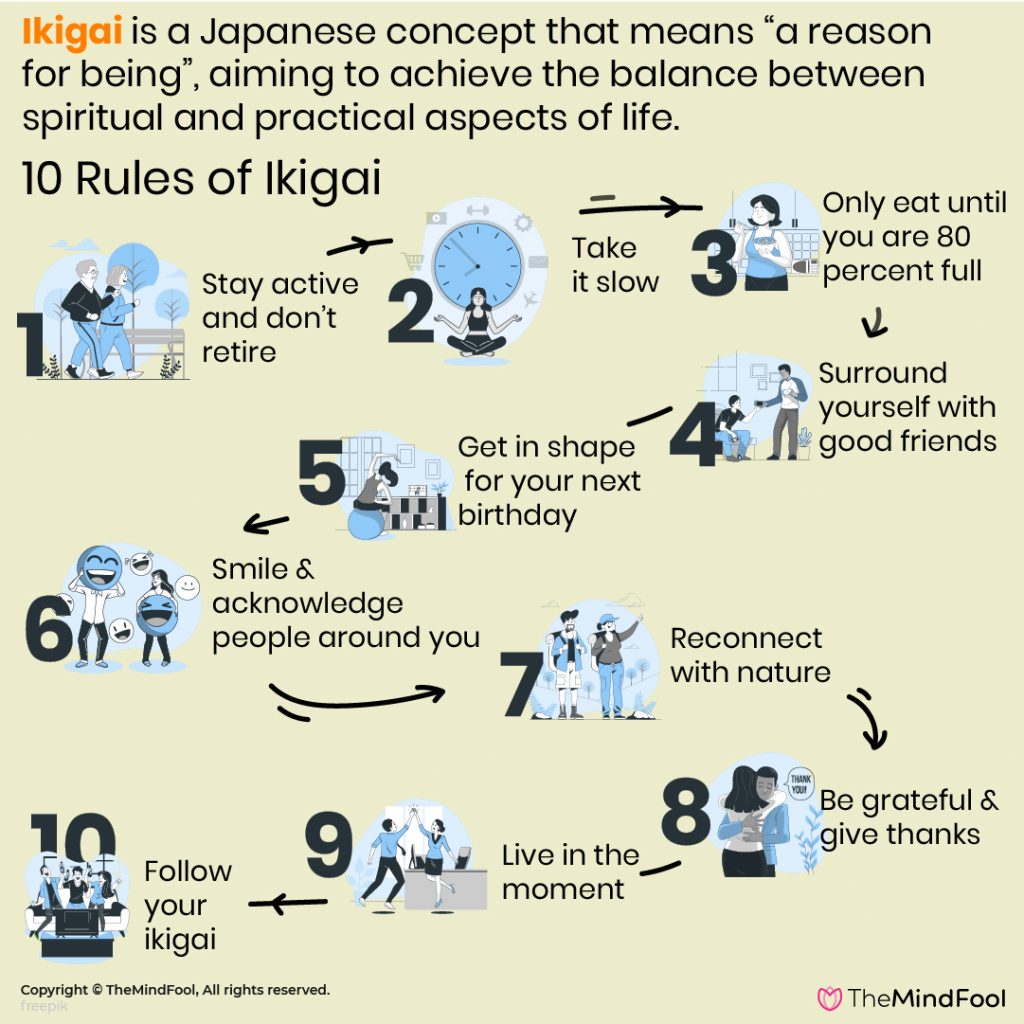
If you successfully find your own ikigai, it is sure to bring your purpose in life, happiness, fulfillment, and of course a healthy and longer life.
But if you feel lost about the first step – start with asking these four questions to yourself
1. What is it that you love doing?
2. What is it that the world needs?
3. What is it that you are good at? and,
4. What is it that you can get paid for?
In place of payment, you can also consider a good trade-off so that you can support your ikigai financially.
Understand the current situation or status of your life and if you still feel unsure, try to bring some new changes in your life. It can be a new hobby, a new side hustle, or even a new friend.
Apart from the four sections or questions cited above, Gracia and Miralles in their book also list ten rules to help us find our own ikigai:
1. Stay active and don’t retire

Retirement is not age, it’s a mindset.
As long as you have a purpose in your life, your body will keep running. Never stop adding value and shaping the world around you – even when you have retired professionally.
The best way is to find a job, side profession or a hobby that you always wanted to do.
2. Take it slow

You are not in a race, it’s a life. Have patience and learn to take one step at a time.
Immediate reactions and hurried nature will put you under stress. So instead, think long term and don’t let short-term milestones jeopardize your ultimate goal in life.
3. Only eat until you are 80 percent full
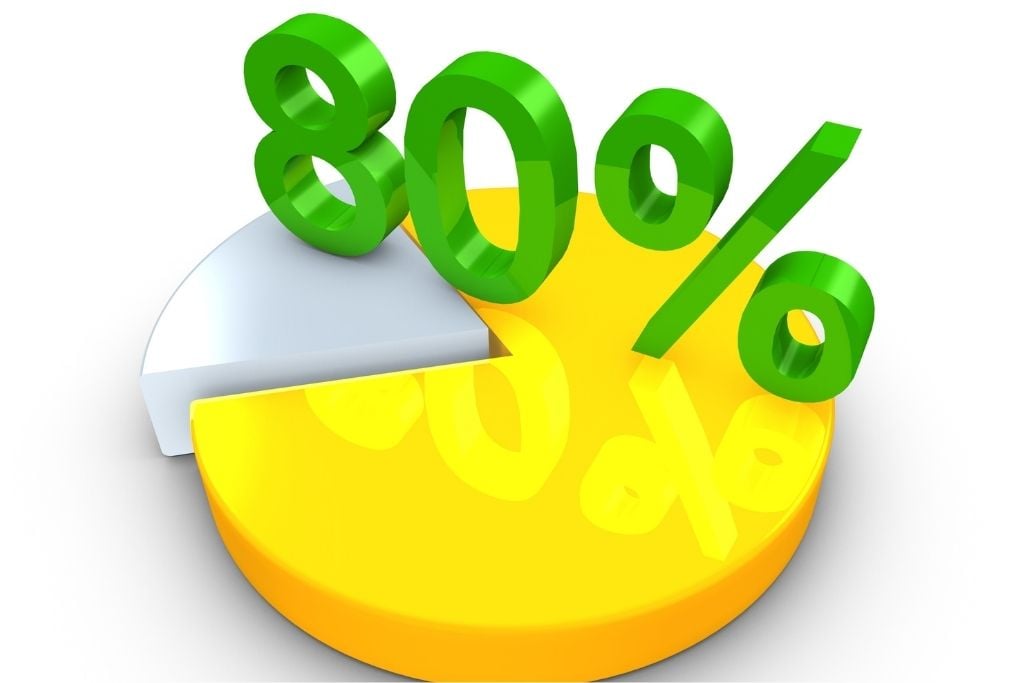
When you are eating, follow the age-old maxim: Less is more. Because it is.
Do not stud your stomach to the maximum. Always leave a little space, say eat 20% less than what your hunger demands.
Along with that, make sure you eat local and healthy produce and also keep a healthy balance of a raw diet.
4. Surround yourself with good friends

There’s an old saying that says “If you have good friends in life, you have everything.”
It not only brightens up your life but also gives you a shoulder in tough times. So instead of sharing your worries with a screen, meet your old friends and make new ones.
5. Get in shape for your next birthday
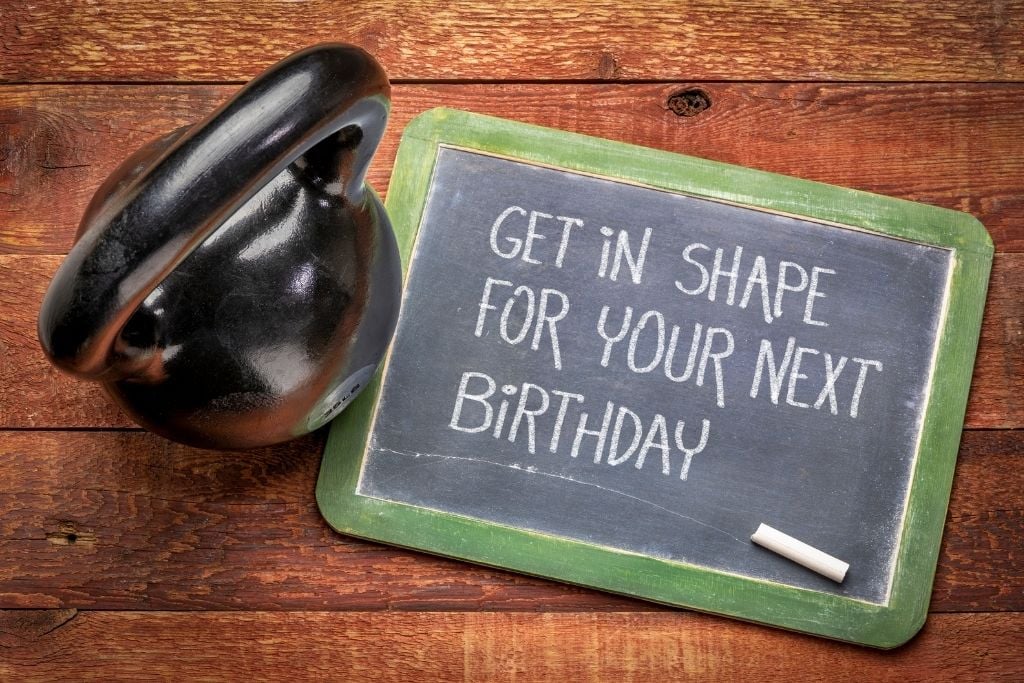
Your body is like a machine, it needs some amount of maintenance daily.
So, make a good exercise schedule and follow it daily. The goal is to not reduce weight but get fit. Oh, and did I tell you, exercise releases happy hormones?
6. Smile and acknowledge people around you

Smile and smile more.
The world is beautiful and so are the people surrounding you. Appreciate everything that you see and meet people with a smile on your face.
It not only sends good vibes to the receiver but also to your own brain.
7. Reconnect with nature

Unfortunately, the city lifestyle has taken over and we have totally lost the joy of living amidst nature.
But we must remember that humans are nature-beings and it’s extremely essential to get back to it, once in a while.
You can maybe go for a walk in the nearby garden or spend some time near the river or do anything else that allows you to revel in nature.
8. Be grateful and give thanks

To everyone and everything.
The nature that gives you air to breathe, water to drink, family, who gives you food to eat or anything else that brightens your day and makes you feel alive.
Long story short, never be afraid to say “Thank you”.
9. Live in the moment
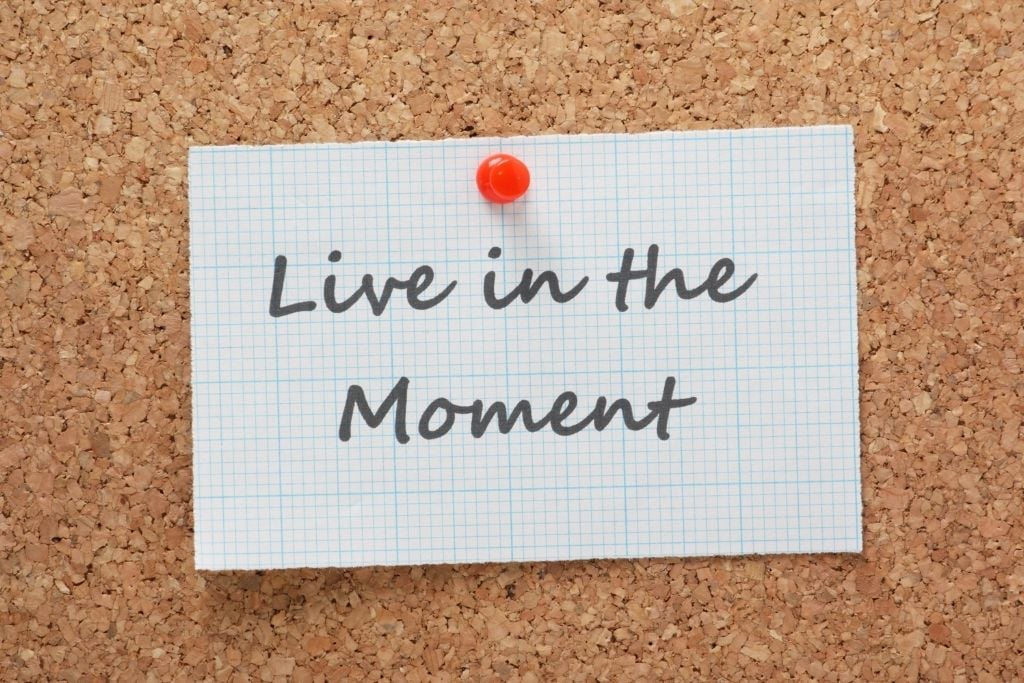
What’s gone is gone, don’t regret it. What is to come is still unknown, don’t fear it.
Instead, enjoy the present.
From the moment you wake up from your bed in the morning till you fall asleep at night, you go through so much in the day – but fail to live. Don’t do it, you have just one life!
10. Follow your ikigai
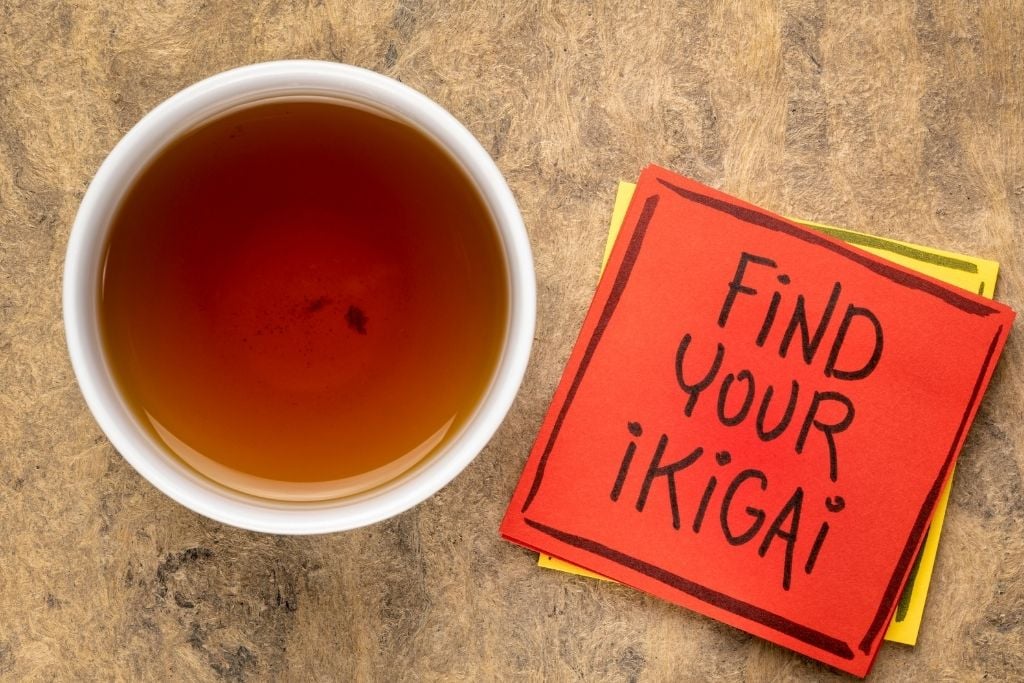
Along with following all the 9 points mentioned above you also need to find the unique talent in you that no one else has.
Once you find it, start practicing it daily.
NOTE
These are not just rules but also suggestions that you can adopt for a healthier lifestyle.
Remember, ikigai is not a given task, it’s anything and everything that gives you satisfaction and pleasure.
The whole understanding of this concept renders useless if you don’t know –
The two golden Lessons from Ikigai Diagram
Ikigai Diagram teaches us a lot about life but most of us fail to see through it. To prevent this loss, I have enlisted two golden lessons that all of us must learn from Ikigai:
#1 Balance is the Key
If you want to make the most of the ikigai diagram, you just cannot leave any circle non-considered.
Always aim for balance in all the four circles if you want a fulfilling life. Even if you satisfy three circles from the diagram but fail to satisfy the fourth, there will still be a void.
For instance, you have turned your passion into a profession and have been excelling at it but if it fails to give anything to the world, there will be a psychological void which can be fulfilled with some volunteering on the sides.
#2 Don’t Fear Overlapping
In the ikigai concept, the overlap is good. Infact, you must aim for the intersection of the circles and spend more time with the overlaps.
For instance, if you have a job that you love, you will find life more satisfactory. Or, if you love to do something and can get paid for it, you will be more motivated to do it. Or, say you love to do something and have found a way to contribute it to society, you will feel more gratified.
Long story short, if you have a choice at any of the intersections, you must always choose them.
NOTE
Most people don’t find their ikigai in their entire life but to follow an almost ikigai at these overlaps is not a bad choice either.
Wait, that’s not it…
Three Classic Mistakes revealed by Ikigai Diagram
We human beings are guilty of making some common mistakes in our daily lifestyle, the effects of which can be rightly explained in reference to the ikigai diagram:
#1 Putting all your eggs in one basket
You can be excellent at something, but putting all your eggs in one basket is very risky. Imagine spending all your time in an art form and never being able to make a career out of it.
Or, practicing your favorite sport all day only to end up injured and heartbroken. You don’t have to invest yourself in just one thing and furthermore, your life should not be limited to just one purpose.
You must keep expanding and exploring your passion to find multiple goals along the way. Don’t forget Bill Gates started with his ikigai in computer development but later found his love for charity.
#2 Spreading yourself too thin
If you muddle between too many things, you will never have enough time to excel at one skill. Thus, you will be average at many things resulting in dissatisfaction.
Remember the saying, “The Jack of all trades is a master of none” – it’s true. If you train yourself to be mediocre at various things, you will never be paid well for your service offerings.
So, instead, choose your skills wisely and divide your time depending on your passion. Always remember you only have 24 hours in a day.
#3 Doing too little
This is the worst mistake we human beings are guilty of. If you do too little you will neither be able to cultivate any passion or hobby nor create a living that you desire.
If these two aren’t met, you can’t even think of helping others or developing new skills. Thus, dissatisfying all the four circles in the ikigai diagram.
I have already told you how depressing it is to avoid even one circle in the ikigai diagram, let along all four.
If after reading this, you still fail to reckon your own ikigai, then you must considering taking an –
Ikigai Test
Ikigai Test helps you find your ikigai with a series of questions divided into the four sections of ikigai (as discussed above). If you are honest with yourself throughout the entire test, you are sure to find your ikigai which can further be utilized to find ikigai jobs that gives you a balance of all the four sections: passion, vocation, profession, and mission.
So now what are you waiting for?
Take the free ikigai personality test!
Ikigai Tattoo
The Japanese word Ikigai has become so famous in recent days that people are also getting it tattooed.
Along with the great lyrical designs that is the Japanese letters (生き甲斐), people are also getting engraved with ikigai symbols or the Venn diagram. The reason behind this fandom is not just the aesthetics but also the thoughtful definition, i.e., “reason for being”.
1.
2.
3.
Ikigai Books – What are your best picks?
Ikigai Book 1 – Blue Jones, Lessons on Living Longer from the People Who’ve Lived the Longest
Dan Buettner, the author of Blue Jones, Lessons on Living Longer from the People Who’ve Lived the Longest studied various areas in the world including Okinawa in Japan, which is home to some of the longest living residents in the world.
He also explained how it was related to having a “purpose in life” which in Japan is recognized as ikigai.
Buettner suggests making three lists for people who wish to find their ikigai: values, things you like to do, and things you are good at. At the intersection point of these three sections will lie your ikigai.
Ikigai Book 2 – The Little Book of Ikigai: The Essential Japanese Way to Finding Your Purpose in Life
Ken Mogi, the author of The Little Book of Ikigai: The Essential Japanese Way to Finding Your Purpose in Life who also a neuroscientist and a broadcaster explains in his book how it ikigai is all about finding the pleasure and satisfaction in what you do, irrespective of the profession.
He also identifies five pillars to ikigai which are as follows: Start small, release yourself, harmony and sustainability, the joy of little things, and be in here and now.
In this book, he also explains how ikigai is the “reason to get up in the morning” along with providing a colorful narrative of Japanese culture.
Ikigai Book 3 – Ikigai: The Secret to a Long and Happy Life
Hector Gracia, the author of Ikigai: The Secret to a Long and Happy Life has released multiple books on this concept and believes that to relate ikigai with only elderly people is unjustified. He further argues that this rising trend has been popular in the younger generations as well.
This book became the international bestselling guide as the author went on to explain this concept as “happiness of always being busy.”
Gracia also explained how ikigai helped him reshape his day. In his words “I have improved my morning routine to start my days doing what is most important to me before getting busy with others.”
Ikigai Book 4 – Ikigai: Giving every day meaning and joy
Yukari Mitsuhashi, the author of Ikigai: Giving every day meaning and joy explains how ikigai is the reason why people are jumping out of bed every morning.
It also helps you in finding your own ikigai, i.e. a passion or a purpose so that you can achieve the sense of fulfillment and happiness that you desire. The author further argues that your ikigai need not necessarily be some grand ambition of lie – it can also be simple pleasures of life like a walk in the park.
He has also included some case studies of athletes or other big personalities finding their ikigai.
Ikigai Book 5 – How to Ikigai: Lessons for Finding Happiness and Living your Life’s purpose
Tim Tamashiro, the author of How to Ikigai: Lessons for Finding Happiness and Living your Life’s purpose outlines a simple map on to live a meaningful life. The book also talks about the lifestyle choices of Okinawan people, which led to the concept of Ikigai.
The author also explains a few examples to emphasize the concept and gives us a real-life picture of its impact.
The four sections of the Ikigai diagram that we discussed above have also been explained in this book.
Don’t go just yet. Here are some ikigai quotes to end on a positive note.
Ikigai Quotes
1. “Stop regretting the past and fearing the future. Today is all you have. Make the most of it. Make it worth remembering.”
― Hector Garcia Puigcerver

2. “The happiest people are not the ones who achieve the most. They are the ones who spend more time than others in a state of flow.”
― Hector Garcia Puigcerver

3. “If you can find pleasure and satisfaction in what you do and you’re good at it, congratulations you have found your ikigai”
― Ken Mogi

4. “Life is not a problem to be solved. Just remember to have something that keeps you busy doing what you love while being surrounded by the people who love you.”
― Hector Garcia Puigcerver

5. “Our ikigai is different for all of us, but one thing we have in common is that we are all searching for meaning.”
― Hector Garcia Puigcerver

Before you go
Remember,
It’s Okay to NOT find your ikigai.
Most people don’t.
Just don’t sit around and wait for the calling from the centre. Instead, spend most of your time in the intersections, work on multiple paths and try to move closer to the centre.
As long as you are doing that, you will keep progressing towards a fulfilling life…
…and keep getting closer to your ikigai.
Because trust me, anything less is not worth it!
Surabhi has a deep passion for words. She puts her heart and mind into whatever she pursues and craves for creative ventures. She has always been keen on creating original content that can make a difference. In her experience as a content writer, she has had the opportunity to work on several fields with Psychology being her favorite. Surabhi says, words have the power to transform the world, better than a sword. So she hopes to contribute her bit to this revolution. At TheMindFool, she feels lucky to have the opportunity to share content capable of bringing about a change in the lives of the readers.
